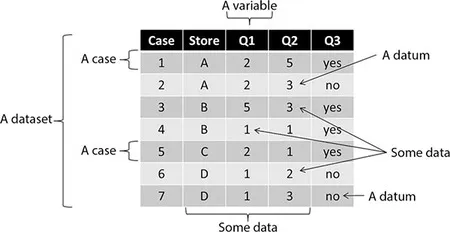
A Step-By-Step Introduction to Statistics for Business
Richard N. Landers
- 496 pages
- English
- ePUB (adapté aux mobiles)
- Disponible sur iOS et Android
A Step-By-Step Introduction to Statistics for Business
Richard N. Landers
À propos de ce livre
A clear and concise introduction to statistics for business and management students, demonstrating how important statistics are in the business decision-making process and covering everything from conducting a survey and collecting data, to summarizing statistical data, and presenting findings.
Each chapter features a real-world business situation and accompanying dataset, the reader is then encouraged to identify the correct statistical concept in the chapter and solve the problem outlined. Offering students a chance to use the newly learned theory in a practical way.
New to the second edition:
- A "Review of Essential Mathematics" prologue, featuring tests and further links to help students refresh their knowledge of the core mathematical concepts used to calculate basic statistics.
- Updated screenshots on using IBM SPSS and Excel.
- A "Statistics in the Real World" feature included at the end of each chapter, demonstrating how statistics are applied in real-world business settings and research, accompanied by reflective questions.
- Updated case studies, examples and diagrams, illustrating key points and helping to reinforce learning.
The book is accompanied byfree online resources including step-by-step video tutorials on how to use Excel and IBM SPSS, datasets and worked solutions, an Instructors' Manual, Testbank, and PowerPoint presentation slides for lecturers. Essentialreading for business students wanting to know how to use statistics in a business setting.
Foire aux questions
Informations
Part 1 Descriptive Statistics
1 The Language of Statistics
- How to describe data in a spreadsheet
- How to categorize variables by their scale of measurement
- How to identify whether variables are continuous or discrete, quantitative or qualitative
- How to identify a Likert-type scale
- How to specify a population and produce a sample from it
- How to identify constructs of interest and operationalize them
- How to identify experiments, quasi-experiments and correlational studies
Data skills you will master from this chapter
- Creating a dataset
- Identifying a dataset
- Navigating a dataset
- Specifying variable characteristics (SPSS only)
Case Study What Do I Do with This Spreadsheet?


1.1 Describing Numbers
1.1.1 Datum, Data and Datasets
